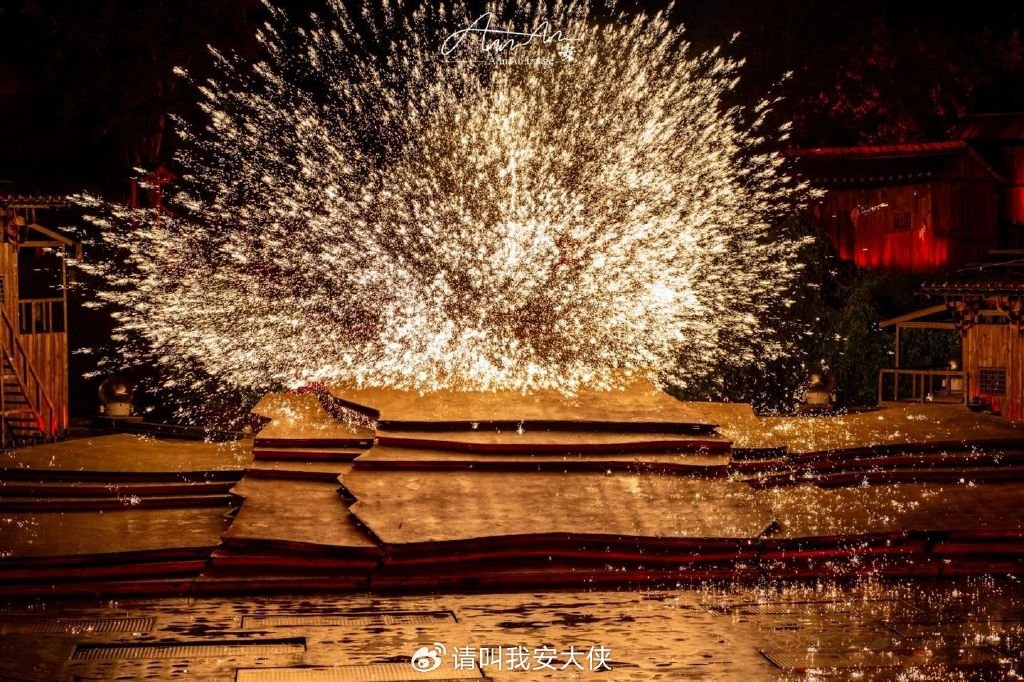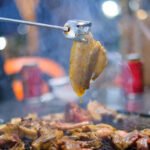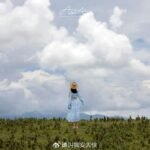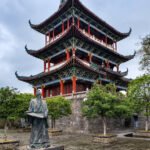I will always be fascinated by the culture and beauty of ethnic minorities! In just one week in Liangshan, I have gained a little understanding of the Yi people. However, for the Yi culture with a thousand-year inheritance, it is only a drop in the ocean. It would be great if I could have the opportunity to live in a Yi people’s village for a period of time. For thousands of years, the Yi people in Liangshan have multiplied and lived on this land, inheriting and preserving the simple, rich and unique cultural traditions of the Yi people in China, and creating a unique and excellent ethnic culture including social organization forms, astronomy, astrology and calendar with the natural closed form of Liangshan. The Yi compatriots have brave, resolute and honest national characters flowing in their blood. The traditional Yi festivals include the grand Yi wedding ceremony, Torch Festival and Yi New Year. The Yi Torch Festival is very important and is a festival with a long history. After three years, on June 24th of the lunar calendar this year, the Torch Festival celebration activities in Xichang City restarted again, which means that the lives of the Yi people have returned to normal. Everyone gathers in the Torch Square in Xichang, everyone holds torches, the bonfire is lit, there are songs and laughter, and the firelight reflects everyone’s face. The Torch Festival originated from the primitive worship of fire by ancient ancestors. It is one of the most iconic symbolic symbols in Yi traditional culture and also a carrier of cultural elements such as Yi traditional music, dance, poetry, food, clothing, farming, astronomy and admiration. Today’s Yi Torch Festival generally lasts for three days and three nights, divided into three stages: sacrificing fire, playing with fire and sending off fire. (The traditional Torch Festival ceremony can be watched in various counties): The first day is sacrificing fire. The villages slaughter cattle and sheep, share collectively and prepare wine and meat to worship ancestors. In the evening, people build an altar at the place selected by the elderly, strike stones to make fire and light the sacred fire. The Bimo chants scriptures to sacrifice fire. The second day is playing with fire. People gather under the sacred fire of the altar and hold various traditional festival activities. Men race horses, wrestle, sing and fight bulls. Women hold up butter umbrellas and dance ‘Duoluohe’ and Dati Dance. On this day, the most important activity is the beauty pageant of the Yi family. The third day is sending off fire. People run with torches in their hands and finally gather to form a giant central torch. People sing and dance around the huge bonfire. The Torch Festival is also a good time for young men and women to convey their feelings. They wear beautiful clothes to show themselves and win the favor of each other through competitions and performances. I heard that men and women who fall in love at first sight can scratch the palm of each other’s hand to express their feelings. Slavery society in Yi history Regarding the social form of the Yi people, you can go to the Yi Slavery Society Museum on Lu Mountain in Xichang to learn about it. The museum is free and it takes two to three hours to walk through carefully. The slavery society of the Yi people in Liangshan has a strict hierarchical division, especially between the ruling class and the ruled class, which is an insurmountable boundary.
Even today, the division of social classes persists, with society divided into five levels: Zimo (the ruling class), Nuohu (Black Yi), Qunuo (White Yi), Anjiawazi, and Guobianwazi (slaves). In the pre-liberation slave society of Liangshan, everyone had their own rank, and there were no free people without rank. Zimo and Nuohu (Black Yi) are the ruling class of the Yi ethnic group in Liangshan. Nuohu (Black Yi) consider themselves to have noble bloodlines and practice strict endogamy within their rank, not intermarrying with people from other ranks. The status of Nuohu is hereditary, and they are born with noble privileges, including the right to own slaves. They derive their economic sustenance from exploiting the ruled classes. Qunuo, Anjiawazi, and Guobianwazi are the ruled, exploited classes, with Anjiawazi and Guobianwazi being the lowest ranks. It wasn’t until 1950, when Liangshan was liberated, that the slave society ruled by the Yi people collapsed. However, in remote villages, intermarriage between Black Yi and White Yi still does not occur, and only a few Yi people who leave Liangshan will marry Han Chinese. The Yi ethnic group’s beautiful and diverse attire is showcased in a series of ethnic costume change videos, where we see that the Yi costumes truly exude a sense of high-end and presence. Historically, due to the numerous branches of the Yi people and their dispersed living conditions, the attire varies significantly across different regions, with distinct styles and strong regional characteristics. Overall, Yi clothing has the following four features: a reverence for black, with clothing reflecting the aesthetic of black dignity and yellow beauty; black inherently conveys a sense of high-end and mystery, reflecting the Yi people’s ‘head-first’ living habits and sense of honor; the headwear is intricate and meaningful, and men’s clothing should reflect their valiant and brave demeanor; the patterns on the clothing embody the Yi people’s understanding and reverence for nature. Liangshan is located in a plateau region with lower temperatures, so the Yi clothing in Liangshan does not have a distinct seasonal division. Even in the height of summer, when renting clothes for photos, it is still a combination of long robes and cheongsams with a ‘Chalwa’ (cloak). Men often wear their hair on top of their heads, while Yi girls wear their hair in a single braid hanging vertically behind their heads. Women’s jackets are made of wool, cotton, or silk, with a placket, front placket, and back collar, with patterned embroidery on the cuffs using colorful threads. The collar is adorned with gold, silver, jewels, and jade. Both men and women of the Yi people wear the very textured ‘Chalwa’ cloak, which overall looks very solemn and dignified. The photo is from the large-scale live performance of ‘A Ru Niu’ in Xichang. Must-try cuisines in Liangshan: The Han and Yi dietary cultures in Liangshan, with Han Chinese food mainly being Sichuan cuisine, which is saltier than Sichuan cuisine. Yi cuisine inherits the most primitive Yi culture, offering a simple yet rich flavor beyond the spiciness and fragrance. Some say it is ‘a gift from nature, a treasure of the world,’ and Liangshan has formed a geographically distinctive industry mainly based on ‘apples, pomegranates, green peppercorns, beef, navel oranges, buckwheat, green tea, black goats, and castrated chickens’.


Tuotuo Meat. Tuotuo meat is one of the most representative dishes in Yi ethnic group’s food culture and a must-have dish for entertaining guests during festivals. Fried Potatoes. Potatoes are never absent in every meal. Potatoes in Liangshan are very soft and glutinous. They can often be seen at snack stalls outside. The most distinctive potato hamburger must be tasted. A super-large potato is cut open and sprinkled with extremely spicy chili powder. Liangshan Tartary Buckwheat. Liangshan Prefecture has unique geographical advantages and climatic conditions and is an ideal pure land for growing green and organic tartary buckwheat. The hotel’s tea supply is all tartary buckwheat tea, and there will definitely be tartary buckwheat cake as a staple food on the dining table. Xichang Brazier Barbecue. It is bold and unrestrained. The aroma roasted from authentic, fresh and simple ingredients has almost become the base flavor floating over the city in Xichang’s nightlife. Haven’t tasted it yet. Mark it for next time. Xichang Tofu Pudding. Local drivers say that what they like to eat most usually is tofu pudding. In many ordinary small eateries, tofu pudding is extremely delicious. Tofu pudding in Liangshan is in Sichuan cuisine style and is eaten by dipping in spicy sauce. Wild Vegetables and Mushrooms. A big difference from northern diet is that wild vegetables and mushrooms are very popular here. There are notices on the walls of mushroom hot pot restaurants to keep ventilation and remember to cook mushrooms thoroughly before eating. Wild vegetable soup pot is very delicious. A whole chicken is stewed in the pot and the soup is so delicious that it makes one feel like flying. Such freshness belongs only to this land. Sweet Fruits. Adequate sunlight has given birth to sweet and attractive fruits. Xichang is also a paradise for fruits. Even in winter, fruits are fragrant here. Adequate sunlight makes Xichang’s winter fruits very delicious. Loquats, navel oranges, apples, snow pears, strawberries, grapes, cherries, tomatoes, kiwis, pomegranates, persimmons and other fresh fruits are deeply loved by everyone. Liangshan Xue. This is a local must-drink yogurt beverage and is very popular. During the Torch Festival, a limited Torch Festival packaging was launched and can only be bought in Liangshan. Love for Drinking. There is a Yi proverb that says, ‘Han people value tea while Yi people value wine.’, ‘With wine there is a banquet. Without wine, killing pigs and sheep is not a proper feast.’ Yi people’s wine mainly includes earthenware jar wine (also known as咂酒), which is the wine used by Yi people during festival celebrations and entertaining guests. According to friends from Chengdu, Yi people don’t care about what kind of environment they are in. As long as there is wine, they can sit anywhere and drink. Fish and Floatingheart in Lugu Lake. Friends who go to Lugu Lake, remember to eat the big fish and floatingheart in the lake. The cooking here is all spicy and salty. If you can’t eat too salty food, be sure to ask for less salt when ordering. The ‘less salt’ here may still be saltier than what we usually eat…






